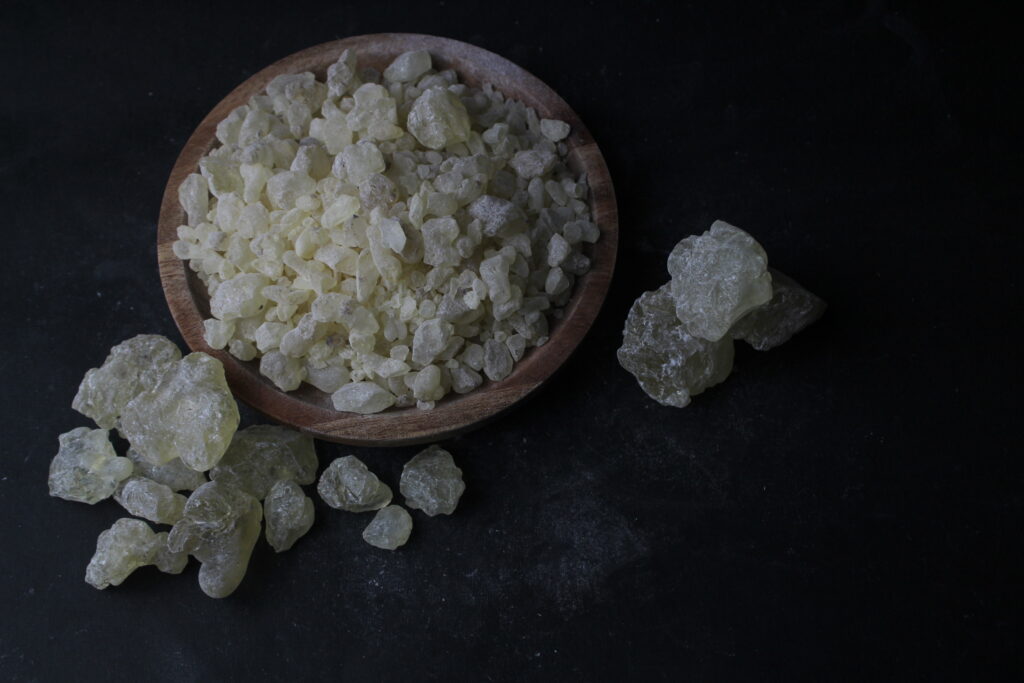How to Manage Gum Damar Effectively
Gum damar, a natural resin obtained from trees of the genus Shorea, is widely used in industries ranging from varnishes to incense and traditional medicine. Managing gum damar production sustainably is crucial for ensuring both economic benefits and environmental conservation. Here’s a guide to managing gum damar effectively, from harvesting to processing.
1. Sustainable Harvesting
Sustainable harvesting begins with selecting mature trees for tapping. Trees that are at least 20–30 years old are ideal, as younger trees can be damaged by premature tapping. The gum is extracted by making incisions in the tree bark, allowing the resin to flow out. These incisions should be small and spaced out to avoid stressing the tree. A common practice is to rotate the tapping area to allow the tree time to heal and regenerate resin.
To reduce harm, use only sharp tools, and avoid cutting too deeply. Tapping too frequently or aggressively can weaken the tree, decreasing its resin production over time and potentially killing it.
2. Post-Harvest Handling
Once harvested, the gum damar should be cleaned of impurities such as bark, dirt, and insects. This can be done manually by scraping or by soaking the resin in water to loosen the dirt. Proper cleaning ensures higher-quality resin, which commands better prices in the market.
After cleaning, gum damar should be dried in the sun for several days. The drying process helps to solidify the resin, making it easier to store and transport. Care must be taken to protect the gum from rain or excess moisture, which can degrade its quality.

3. Proper Storage
Once dried, gum damar should be stored in a cool, dry place to prevent it from becoming too brittle or sticky. Storing it in a shaded, ventilated area ensures the resin remains stable. The gum can be packed in sacks or containers for long-term storage, but it’s essential to inspect it regularly for signs of mold or pests.
4. Processing Techniques
The final step is processing the gum damar for different uses. For example:
- Filtration and purification: In industries that require clean, transparent resin (e.g., varnish production), gum damar can be filtered to remove impurities. This involves heating the resin and passing it through fine mesh or cloth.
- Powdering: Gum damar can also be ground into a fine powder, which is used in making incense or as an additive in paints. Grinding should be done carefully to avoid excessive heat, which can affect the resin’s quality.
5. Market Considerations
To get the best price for gum damar, it’s essential to understand market demand and trends. Different grades of resin are valued for different purposes. For example, clear damar is preferred for varnishes, while darker or more opaque resin might be used in incense production. Producers should sort their resin accordingly to meet buyer expectations.
Networking with traders or setting up cooperative groups can also help small-scale farmers negotiate better prices and reduce middleman costs. Additionally, producers should stay informed about organic certification programs, which may offer higher market premiums for sustainably harvested damar.
Conclusion
Effectively managing gum damar requires a balance between sustainable practices and efficient processing. By adopting proper techniques from harvesting to storage, farmers can ensure long-term profitability while preserving their natural resources. Sustainable practices not only protect the environment but also enhance the quality of gum damar, benefiting the entire supply chain from producer to consumer.
Contact us :
☎️ : +6285648688722
📍 : Jl. Ir Soekarno, No.122, Dadaprejo, Junrejo, Kota Batu, East Java 65323